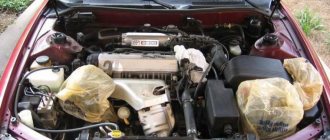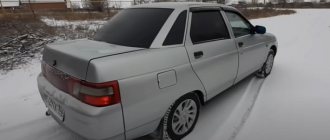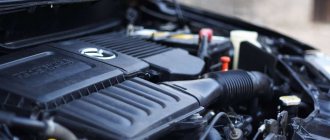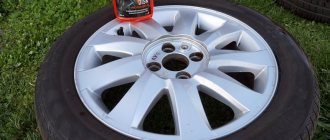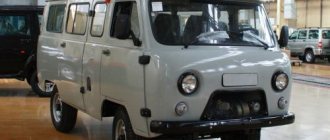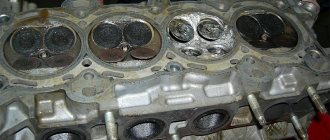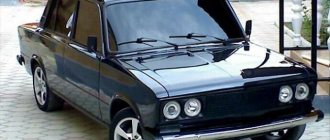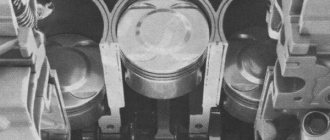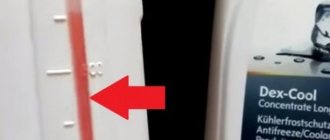The layout of the block is determined by the arrangement of the cylinders.
The row layout is technologically the simplest in design and with the row layout the block is the heaviest, but repairing or restoring the block and block beds is not difficult. In-line cylinder arrangement is very common in large marine diesel engines where serviceability is key.
The V-twin engine has two block layout options - with the left and right blocks offset from each other (adjacent connecting rods on the neck), or without displacement (trailer connecting rod, unequal compression ratios on the left and right blocks). These options have found their application in the automotive industry.
W-twin and radial engines have an even more compact cylinder block and a shorter shaft. The weight of such an engine block is lower, but it is less rigid and more difficult to repair. Star-shaped ones have found their application on some types of helicopters. The cost of such engines is very high.
The block has three main dimensions: cylinder diameter, piston stroke, number of cylinders (engine characteristics).
The cylinder block must have a sufficiently high rigidity to avoid ovalization of the cylinders and scuffing of the pistons beyond permissible limits.
How are the cylinders located in engines?
There are different engine models - these include vintage one- and two-cylinder internal combustion engines, traditional in-line four- and six-cylinder models.
Related article: Signs, causes and consequences of car engine overheating
Larger units had V-shaped blocks - such units could have eight or more combustion chambers.
Row arrangement
With an in-line arrangement in the block, the cylinders are arranged in one row. In this configuration, there are two, three, four, five and even six-cylinder engines.
Two- and three-cylinder internal combustion engines are now installed on modern cars less often, although their popularity is slowly gaining momentum.
This was facilitated by smart fuel mixture preparation systems and turbines - for example, a turbocharged version of the two-cylinder internal combustion engine of the Fiat 500 hatchback. The three-cylinder in-line engine can be found on the Daewoo Matiz and many others.
As for the in-line “four”, such blocks are installed in most engines for passenger cars - the volumes of such engines start from 1 liter, and the largest in-line internal combustion engine is 2.4 liters. and more.
In-line five-cylinder engines began appearing in mass-produced cars in the 1970s. Among the first are Mercedes diesel models - they were installed in 1974 on the W123 model.
And already in 1976 they built a five-cylinder engine from Audi. Starting from the late 80s, the inline five no longer surprised anyone and was successfully installed on a variety of cars from Fiat, Volvo and other auto brands.
How to find out engine size: determine the working volume of the internal combustion engine
As you know, engine displacement is directly associated with power and speed for many car enthusiasts. In practice, this often happens, because if we are talking about passenger cars, and not about special equipment, then the larger the engine volume, the faster, more powerful and more dynamic the vehicle turns out to be.
Note that the only exception to this unspoken rule can be considered units with a mechanical compressor or turbocharging, where the displacement may be relatively small, but the power of such an engine is quite high compared to atmospheric counterparts.
Drivers also know that generally accepted designations are 1.5, 1.8, 2.0, 3.5, etc. may differ slightly from the actual volume of the internal combustion engine. For example, a 1.5 liter engine may physically have 1497 cubic centimeters, but a 4.4 engine actually has as much as 4499 cubic centimeters of volume.
For this reason, some owners have a desire to find out the real volume of the power unit. This may be necessary to calculate some taxes on vehicle maintenance, etc. Next, we will try to answer the question of how to determine engine size.
Engine size: how to find out
First of all, this characteristic can be determined by studying the technical passport of the vehicle. To determine this, you can also use the vehicle’s VIN code, which is actually a unique vehicle identification number and contains a lot of useful information about the vehicle’s configuration, country of manufacture, etc.
The vehicle's VIN code can be located in different places, on the pillar between the driver's and passenger's rear doors on a special plate, closer to the wheel arch, under the rear seat, on the dashboard closer to the windshield, under the hood in the engine shield area, etc.
Please note that if you are purchasing a car that has already been used, then the data on the registration certificate and VIN code may well differ from the real ones. To put it simply, a motor swap (engine replacement) is not always done with exactly the same unit. Usually, when replacing an engine, the motor itself is often installed more powerful than the standard one, although there are cases when a less efficient solution is intentionally installed.
To obtain accurate information, you need to find the engine number, as well as other designations on the internal combustion engine. Based on the data obtained, you can then find this motor in the manufacturer’s catalogs and find out its displacement, as well as other characteristics. Please note that the engine number is not always easy to find.
Different manufacturers apply markings in certain places, so you need to be able to look at the rear of the cylinder block, you may need to look from below (you need an inspection hole, lift or overpass), unscrew the fender liners in the wheel arches, etc.
However, it may also be that the engine number is not readable (rusted, sawed off, etc.). In this case, it is much more difficult to reliably determine which internal combustion engine is under the hood, especially for those who are not specialists.
Of course, in such a situation, you can turn to official experts, but for obvious reasons this is not worth doing, especially if the car is registered, and there are no legal problems with it. Also, you should not advertise the discovered problem by providing the car for inspection by private independent experts.
If the issue of determining the actual volume is very acute (for example, when selecting spare parts for repairs, etc.), then you need to separately stock up on knowledge of how to find out the engine volume by cylinder volume. In other words, you should study how to find out the volume of an internal combustion engine cylinder.
What determines the numbering of engine cylinders?
However, it is important to know that whatever the engine layout and cylinder arrangement, cylinder No. 1 - the main cylinder, always contains spark plug No. 1.
Naturally, this is the order in which the cylinders of any engine are numbered. What determines the location and numbering of engine cylinders:
- drive type: front or rear;
- engine type: in-line or V-shaped;
- engine installation method: transverse or longitudinal;
- direction of motor rotation: clockwise or counterclockwise.
The arrangement of cylinders in multi-cylinder engines is as follows:
- vertically - that is, in one row, without angular deviations;
- obliquely – at an angle of 20°;
- V-shaped - in two rows. The angles between rows can be 90 or 75 degrees;
- opposite (horizontal) – the angle between the cylinders is 180°. This arrangement of cylinders is used in bus engines, which allows the engine to be placed under the floor of the passenger compartment, freeing up usable space.
4 cylinder
There are both in-line and opposed four-cylinder engines, their crankshafts are made according to the same design, but the order of operation of the cylinders is different. This is due to the fact that the angle between pairs of crankpins is 180 degrees, that is, crankpins 1 and 4 are on opposite sides with crankpins 2 and 3.
1 and 4 necks on one side, 3 and 4 on the opposite.
In-line engines use the cylinder operating order 1-3-4-2 - this is the most common operating scheme, almost all cars work this way, from Zhiguli to Mercedes, gasoline and diesel. It operates sequentially with cylinders with crankshaft journals located on opposite sides. In this scheme, you can use the sequence 1-2-4-3, that is, swap the places of the cylinders whose necks are located on the same side. Used in 402 engine. But such a scheme is extremely rare; they will have a different sequence in the operation of the camshaft.
The boxer 4-cylinder engine has a different sequence: 1-4-2-3 or 1-3-2-4. The fact is that the pistons reach TDC simultaneously, both on one side and on the other. Such engines are most often found on Subaru (they have almost all boxer engines, except for some small cars for the domestic market).
cylinder numbering
cylinder operating order??????????
SUBARU IMREZA WRX STI GC8 TOYOTA SOARER 1JZ-GTE E-JZZ30 NISSAN SKYLINE GTS25t type M ECR-33
if you look at the engine from above, it’s like this:
right front 1st (near the timing belt), left front 2nd (near the timing belt), far right 3rd, far left 4th
Subaru Legacy B4 RSK TT 2001 restyle
Message from
PaFFIf you look at the engine from above it looks like this:
right front 1st (near the timing belt), left front 2nd (near the timing belt), far right 3rd, far left 4th
From above you can look in the direction of travel and against.
Air filter side 1 and 3 Battery side 2 and 4
Or are you interested in the order of operation of the cylinders during the working cycle?
“This is reckless,” said Experience. “This is useless,” said Pride. “Try...” whispered Dream.
What are you interested in? The operating order of the cylinders is 1324. Numbering: you stand in front of the car with the hood open. Left near - 1, right near - 2, left far -3, right far - famous 4
